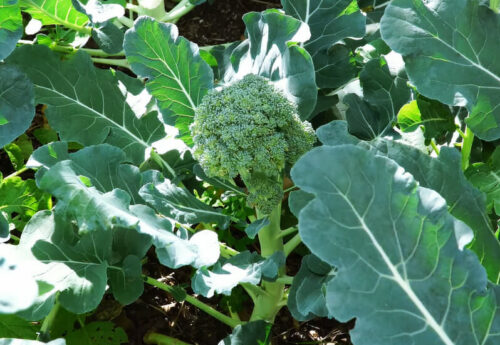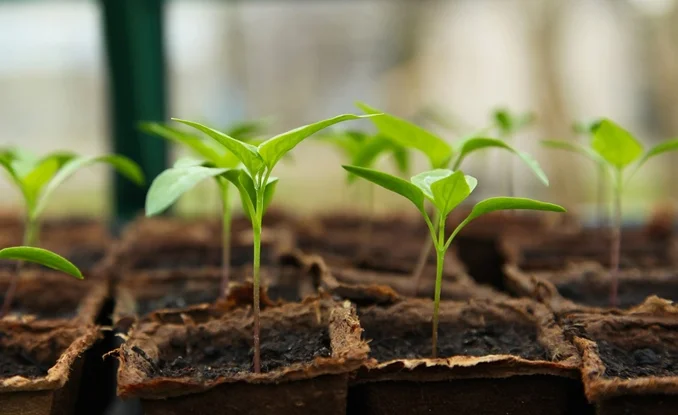When you think about vegetable harvesting time, you might consider what most people would think.
We just need to take the entire portion of the vegetables. Most of the time, we just need to pull them out of the soil along with their roots.
But have you ever thought about getting the vegetables that grow on trees? For some people, it could be a bizarre thing.
Vegetables are actually edible parts of plants other than fruits. But what about those that grow on trees? It is highly possible for vegetables to grow on trees.
But most of the time, we eat normal veggies that don’t grow on trees, such as lettuce, spinach, kale, cabbage, etc. If they do exist, what are they? Let’s cover the basics first before digging more.

Broccoli In Your Backyard Garden
What are vegetables?
Just like many of us, we must agree that anything that comes with seeds is fruit. In a nutshell, “vegetable” is a conventional way of defining the edible part of a plant. But it is not a scientific definition but rather a traditional one.
For instance, we consider broccoli a vegetable, but it is scientifically a flower bud. Then we have the carrots in our kitchen. Not all of us realize that they are roots.
In other words, many people have been debating the status of tomatoes. But again, anything with seeds is fruit. Kale, which we think of as a true vegetable, is just leaving.
Items that I mentioned above are called “vegetables” in culinary domains.
According to the UC Vegetable Research & Information Center, any portion of a plant that is edible is called a vegetable. That includes the leaves, stem, roots, tubers, bulbs, and flowers. The fruit is the mature ovary stage of the particular plant. Botanically, we could say that tomatoes are fruit, but they are commonly considered veggies.
Precisely speaking, vegetables are the edible parts of the herbaceous plant.
Herbaceous plants are plants with soft stems. Therefore, these particular plants are totally different from plants with woody stems, such as trees.
Most of us are probably unaware of what a vegetable is. Sometimes the only thing we remember about dinner is the potatoes or broccoli that were served as a side dish.
In real life, it’s normal to be unsure if something is a fruit or a vegetable. If you ask a botanist about vegetables, you’ll receive a completely different response than if you ask a chef.
A “vegetable” is any component of a plant that is not a fruit or berry. A “vegetable” is any plant component that does not produce seeds.
Remember that this applies to the entire plant, including the stems, leaves, and roots. It is critical to remember that all of these nutrients and components may be found in large quantities in vegetables.
As a result, the vast majority of vegetables that grow on trees are actually structural components of the tree or its trunk.
“Vegetable is a completely arbitrary culinary term. Whatever the product’s position in the dish is, it’s all a question of perception.
The use of the term “fruit” to describe a plant component while also employing the phrase “vegetable” creates no ambiguity in the meaning.
If we follow this fundamental rule of thumb, vegetables may be classed as the plant’s stems, leaves, roots, blooms, bulbs, and seeds. Plant fruits and seeds can also be termed veggies.
In addition to botanical fruits, other fruits such as cucumbers, squash, and pumpkins can be classified as “vegetables.”
Can vegetables grow on trees?
The common vegetables that we usually see in the traditional market do not grow on trees. Well, we usually purchase cabbage, celery, onions, spring onions, and so on. They do not grow on trees.
Cabbage is a stemmed herbaceous plant. It is not a tree.
A fun fact about onions. Did you know that they are actually leaves? Onions are uniquely formed from the leaves of herbaceous plants.
Other examples of leaves of herbaceous plants are spinach, tarragon, parsley, kale, etc.
Many people think that all true vegetables come from herbaceous plants. But that is just a fossilized assumption. And they are not growing on trees.
If you are asking if there are any vegetables that grow on trees, then the answer is yes.
What are vegetables that grow on trees?
There are some vegetables that naturally grow on trees. Some of the names that I’d like to mention might sound strange to you.
Here are some examples of vegetables that grow on trees:
- Hibiscus flowers
- Moringa leaves
- Linden leaves
The list of leaves and flowers that I’ve mentioned above indeed grows on trees. You could spare your time to do deeper research about them. You can even find them in some markets in your area.
We know that most of the leaves that you find on trees on your property could be toxic. But some of them are indeed edible.
Besides the tree leaves and flowers, there’s also a unique specimen that we can find growing on trees. These specimens are also often called vegetables in the kitchen. They are common stuff.
You might have guessed it before. If you were thinking about mushrooms, congratulations!
Mushrooms do not only grow on trees but also on woodpiles, soil, and some other natural mediums.
But the mushrooms that grow on trees show us a bad sign. It means the tree has a fungal infection.
Although mushrooms come from fungi, the culinary world recognizes them as vegetables. But if we refer back to the scientific definition of vegetables, mushrooms are not vegetables at all.
Here is where the thing could be a bit tricky. The US Department of Agriculture has recognized mushrooms as vegetables.
There’s a good reason why. Mushrooms, the edible ones, come with nutrients that we usually find in common vegetables. In the culinary world, mushrooms are often used as a vegetable and as a meat replacement.
So, what do you think? Are mushrooms vegetables? Or simply edible fungi?
No matter what your answers are, they also grow on trees.





